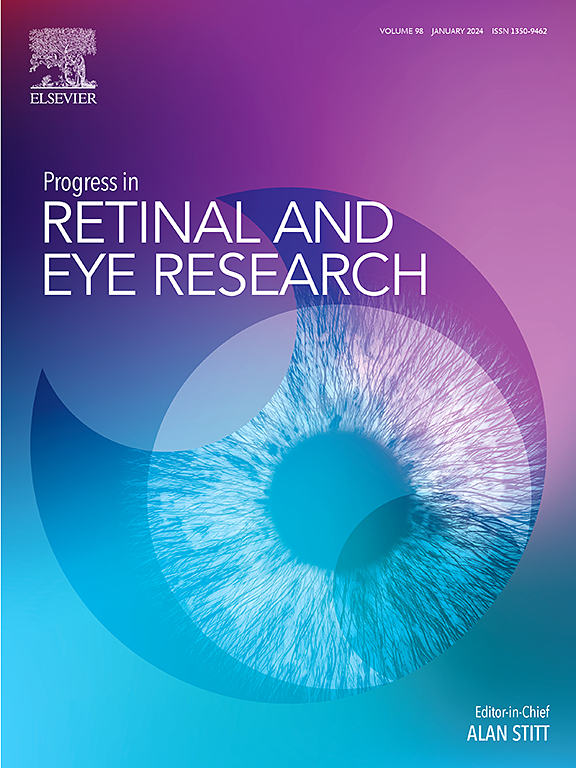Spaceflight Associated Neuro-ocular Syndrome (SANS) and its countermeasures
IF 14.7
1区 医学
Q1 OPHTHALMOLOGY
引用次数: 0
Abstract
Astronauts can develop a distinct collection of neuro-ophthalmic findings during long duration spaceflight, collectively known as Spaceflight Associated Neuro-ocular Syndrome (SANS). These clinical characteristics include optic disc edema, hyperopic refractive shifts, globe flattening, and chorioretinal folds, which may pose a health risk for future space exploration. Obtaining knowledge of SANS and countermeasures for its prevention is crucial for upcoming crewed space missions and warrants a multidisciplinary approach. This review examines the potential causes and countermeasures of SANS, including space anticipation glasses, lower body negative pressure, venoconstrictive thigh cuffs, impedance threshold devices, translaminar pressure gradient modulation, centrifugation, artificial gravity, pharmaceuticals, and precision nutritional supplementation. This paper highlights future research directions for understanding the genetic, anthropometric, behavioral, and environmental susceptibilities to SANS as well as how to use terrestrial analogs for testing future mitigation strategies.
航天相关神经-眼综合征(SANS)及其防治。
在长时间的太空飞行中,宇航员可能会出现不同的神经眼科症状,统称为航天相关神经眼科综合征(SANS)。这些临床特征包括视盘水肿、远视屈光移位、眼球变平和绒毛膜视网膜褶皱,这些可能对未来的太空探索构成健康风险。获得SANS的知识和预防措施对即将到来的载人航天任务至关重要,需要采取多学科方法。本文综述了SANS的潜在原因和对策,包括空间预测眼镜、下体负压、静脉大腿袖带、阻抗阈值装置、跨层流压力梯度调节、离心、人工重力、药物和精确营养补充。本文强调了未来的研究方向,以了解对SANS的遗传,人体测量,行为和环境敏感性,以及如何使用陆地类似物来测试未来的缓解策略。
本文章由计算机程序翻译,如有差异,请以英文原文为准。
求助全文
约1分钟内获得全文
求助全文
来源期刊
CiteScore
34.10
自引率
5.10%
发文量
78
期刊介绍:
Progress in Retinal and Eye Research is a Reviews-only journal. By invitation, leading experts write on basic and clinical aspects of the eye in a style appealing to molecular biologists, neuroscientists and physiologists, as well as to vision researchers and ophthalmologists.
The journal covers all aspects of eye research, including topics pertaining to the retina and pigment epithelial layer, cornea, tears, lacrimal glands, aqueous humour, iris, ciliary body, trabeculum, lens, vitreous humour and diseases such as dry-eye, inflammation, keratoconus, corneal dystrophy, glaucoma and cataract.

 求助内容:
求助内容: 应助结果提醒方式:
应助结果提醒方式:


